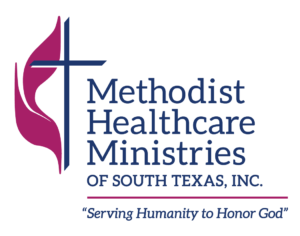The Above photo is of the port of entry bridge in Brownsville, Texas that leads into Matamoros, Mexico taken a few days after Title 42 ended.
A HUGE Thank you from all of us at Texas Impact to all in the Rio Grande Valley who took time out of their busy schedules especially during this time to meet with us. It is our hope that this will have a mighty impact on having your voices heard and uplifted
End of Title 42 in The Rio Grande Valley: The True Story
Texas Impact staff and camera crew had the blessing to not only witness what the end of Title 42 looked like on both sides of the border in the Rio Grande Valley, but also met directly with asylum seekers, community members, activists, faith based organizations, and non-governmental organizations. We were able to see, hear, and learn from all of them about the realities and needs of the community. In a matter of days after visiting ports of entry on both sides of the border, and speaking to different people involved in assisting asylum seekers, we were able to hear common threads about the real needs of this border community. It was not more policing, militarization, and surveillance.
No Invasion in Sight
The first thing that was noticeable, despite the gray skies and downpour, every port of entry we visited from the US side, looked like–a normal day–there was no invasion. It was a normal day-to-day flow of people going and returning at the various points of entry in Brownsville, Nuevo Progreso, Reynosa, and Hidalgo. In fact, at the Nuevo Progreso port of entry we witnessed foot traffic going and returning from Mexico with shopping bags as this port of entry attracts many for its various shopping and affordable medical options. We talked to a few locals from the community who drove us around to some ports of entry. They confirmed that it looked like a normal day, and that the media hype about the border being invaded, was simply “not true here”. In fact, border encounters dropped over fifty percent after Title 42 ended. The asylum seekers are going to “invade” our borders, myth debunked.
In a previous blog post I wrote about how the Biden administration had announced sending 1,500 active duty military troops to the US-Mexico border in preparation for the end of Title 42. Currently, there are four different law enforcement entities at our border to address what is clearly a humanitarian crisis. This includes Operation Lone Star for which Texas has spent over 4 billion dollars up to date and will continue to fund. Now that Title 42 is over, and there is no invasion of asylum seekers into our country, it is clear that wasting funds on more law enforcement entities at the border is an erroneous approach to a humanitarian crisis.
Border Community Needs Resources to Welcome with Dignity
The second thing that was noticeable, in Brownsville, there are asylum seekers stuck on the streets because the shelters are at their full capacity. We talked to asylum seekers who confirmed being processed by immigration officials and allowed to continue their immigration proceedings in the US. However, they were stuck waiting for bus tickets or flight tickets to become available so they could finally reach their destinations where most had family or friends waiting for them.
Indeed, a few days prior, I witnessed asylum seekers in Brownsville holding a car wash at a gas station. Many were singing and dancing as they washed the cars manually and some even doing so while barefoot. When I approached them, I was told that they were washing cars to help collect money for food, bus tickets, or flight tickets to get out of Brownsville. They had no carwash fee, just whatever people felt like giving. They collected the money in a jug with a small cut out that one of them would safekeep so that at the end of the day they would split the money amongst themselves. The asylum seekers are here to ask for “handouts”, myth debunked
These observations are clear in showing the need that border communities have reiterated over and over, that is the dire need for resources to welcome with dignity such as safe shelters, food, medical care, legal assistance, among many other resources.
Rio Grande Valley Community Takeaways
The third thing that was noticeable, after talking to various people who work in some capacity with asylum seekers, was hearing common themes of the real necessities of this community. For one, many families in this community are of mixed immigration status and having more policing and militarization only causes fear and mistrust of police. Another, is the need for investment in the infrastructure, roadways, education, and health care that would really benefit the community as a whole instead of the billions poured into policing and surveillance. As we witnessed during the rainy days in the Rio Grande Valley the flooding is very real and infrastructure is a necessity that needs to be funded and fixed. Despite the fact that our state and federal governments keep funding and legislating for more militarization and more walls (both physical and complex legal barriers) we experienced for ourselves how safe and welcoming this community is and that it is not a war zone by any definition. Finally, for faith communities, we kept hearing that it is your duty to live your faith values by truly welcoming the neighbor and that when you see another’s suffering, you treat them as if it was your own family member suffering.
Pictures Are Worth a Thousand Words
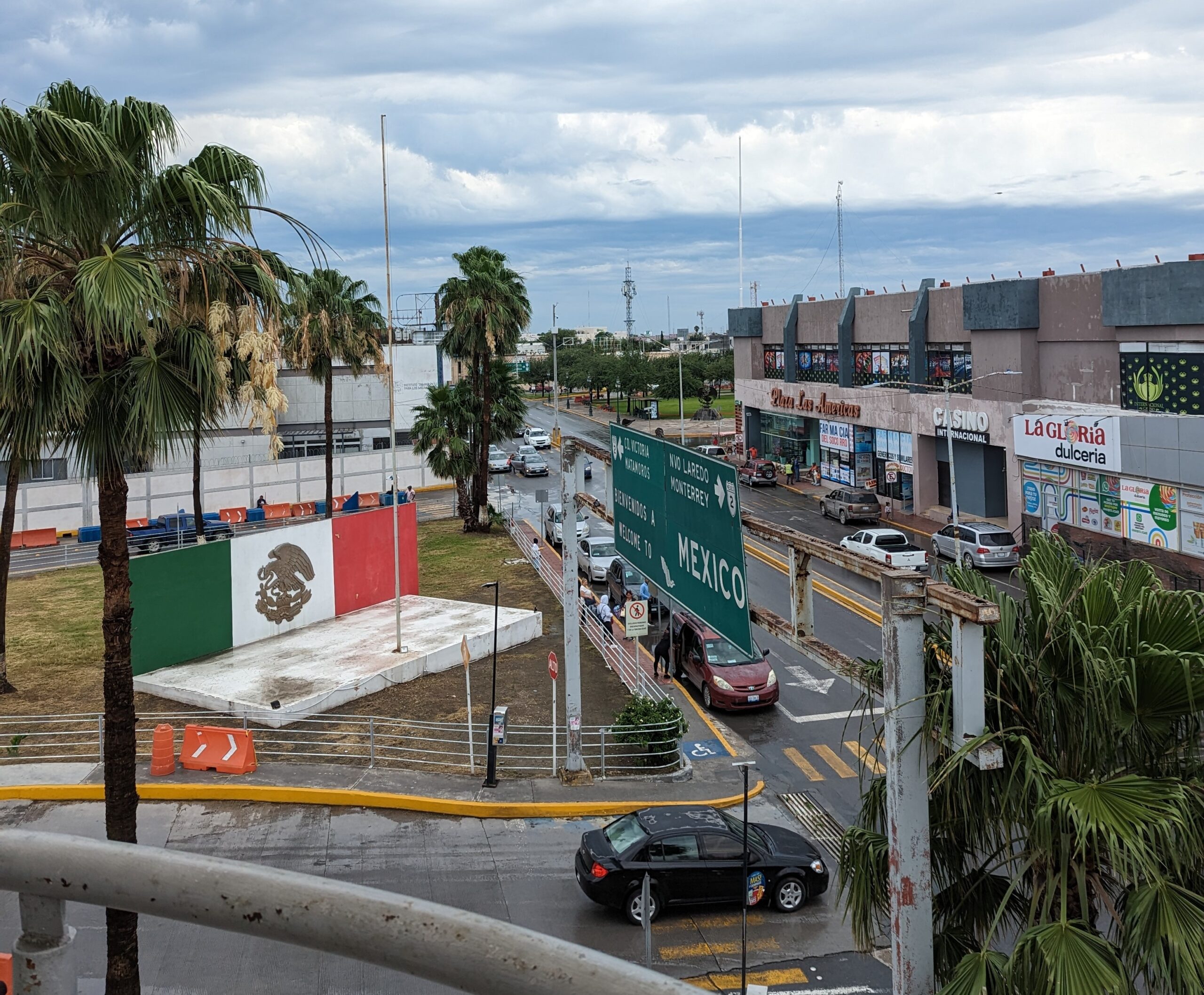
The above photo is right across from the port of entry in Reynosa Mexico taken a few days after Title 42 ended. There was no invasion of asylum seekers at this port of entry from either the US or the Mexican side. We were grateful that the rain had finally stopped after it poured all morning.
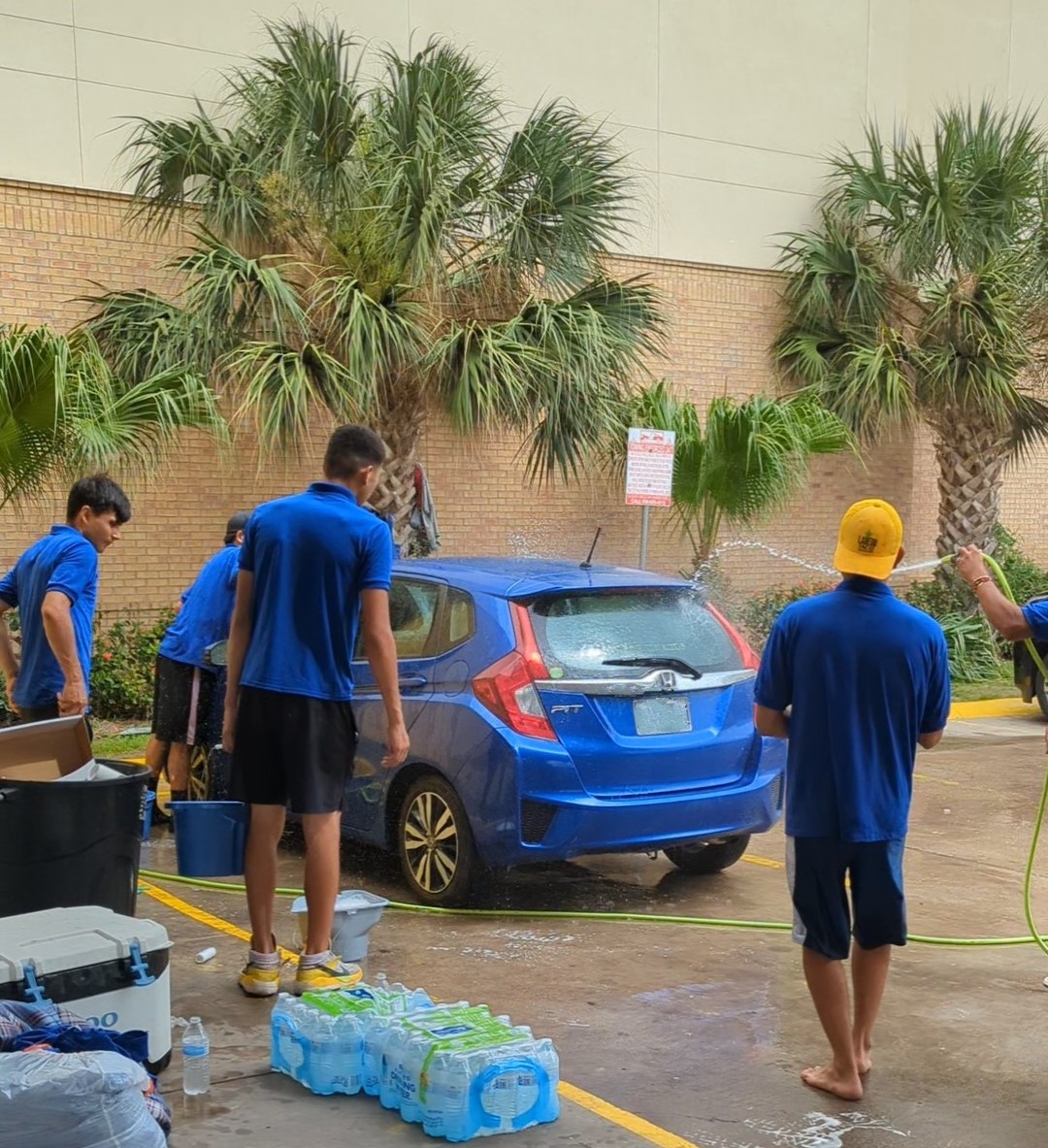
The above photo is that of asylum seekers in Brownsville holding a car wash to collect funds for food and tickets so they can continue on their journey to their final destinations in the US where most have family or friends. Even with no shoes, I saw them washing cars with joy in their hearts, singing, and dancing.
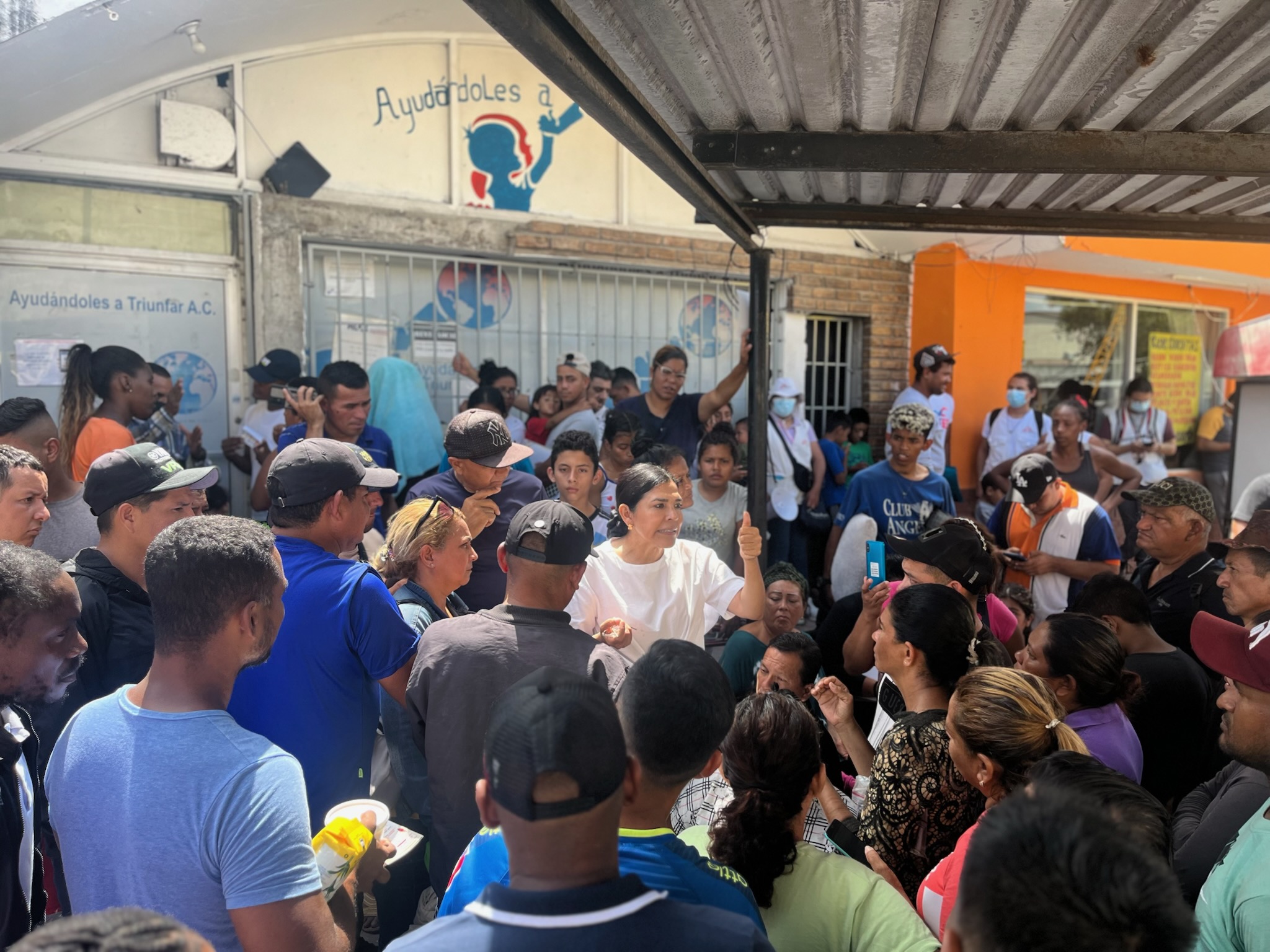
The above photo is in Matamoros, Mexico, a few days after Title 42 ended. Pictured is Gladi Canas, Director of Ayudandoles a Triunfar surrounded by asylum seekers who are waiting to enter the US–“the right way” –in an outdoor asylum encampment with no food, no running water, no electricity, and are currently flooded due to the recent rain. Gladi is reminding them to be patient, to keep trying to get an appointment on the CBP One app, and that they deserve to enter the US through the front door with dignity and respect.

The above photo is a part of the makeshift asylum encampment in Matamoros, Mexico a few days after Title 42 ended. If you look closely you can see the areas that were flooded from the rain. There are thousands of asylum seekers here, some waiting for months trying to obtain a CBP One appointment so they can be processed and seek asylum.
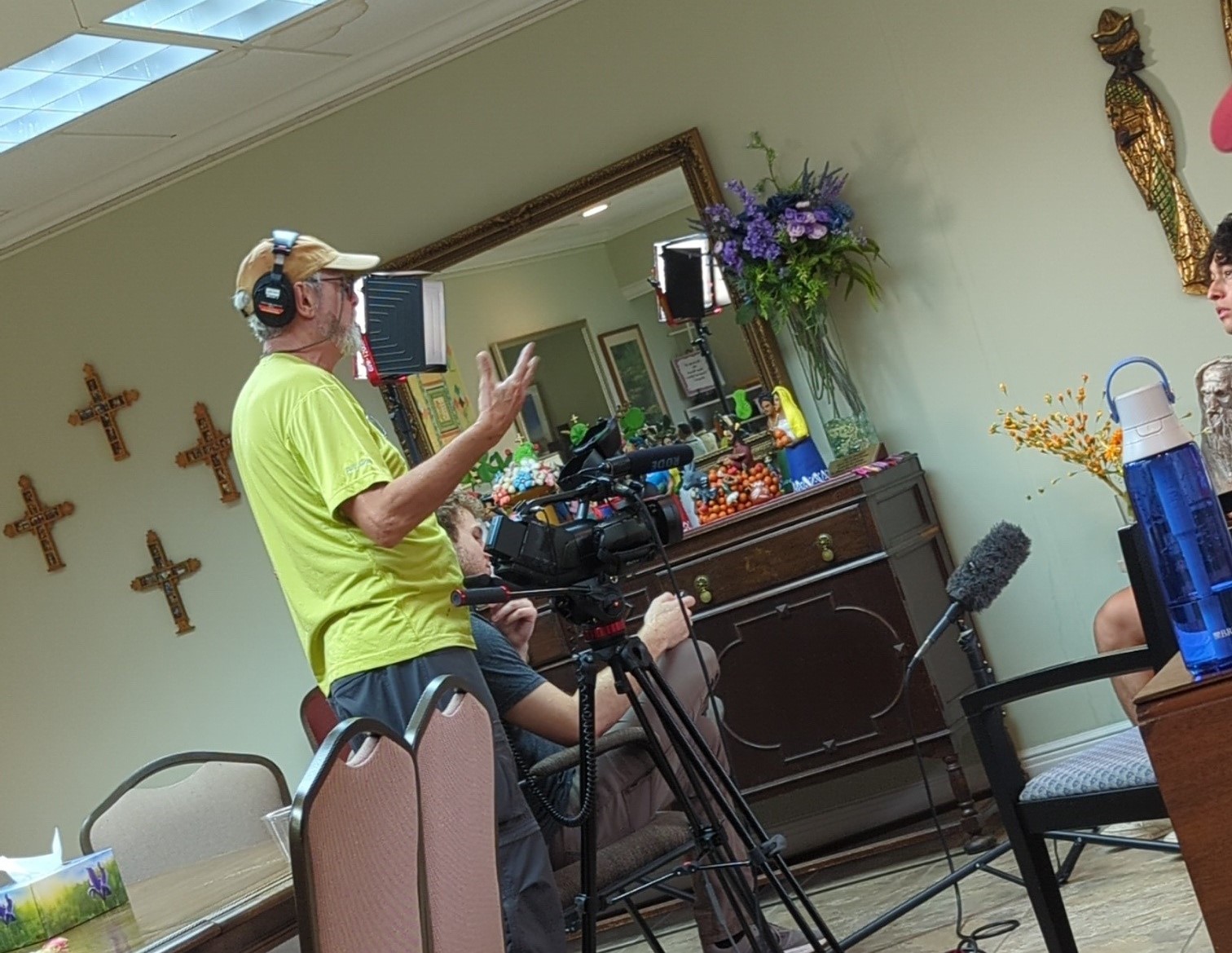
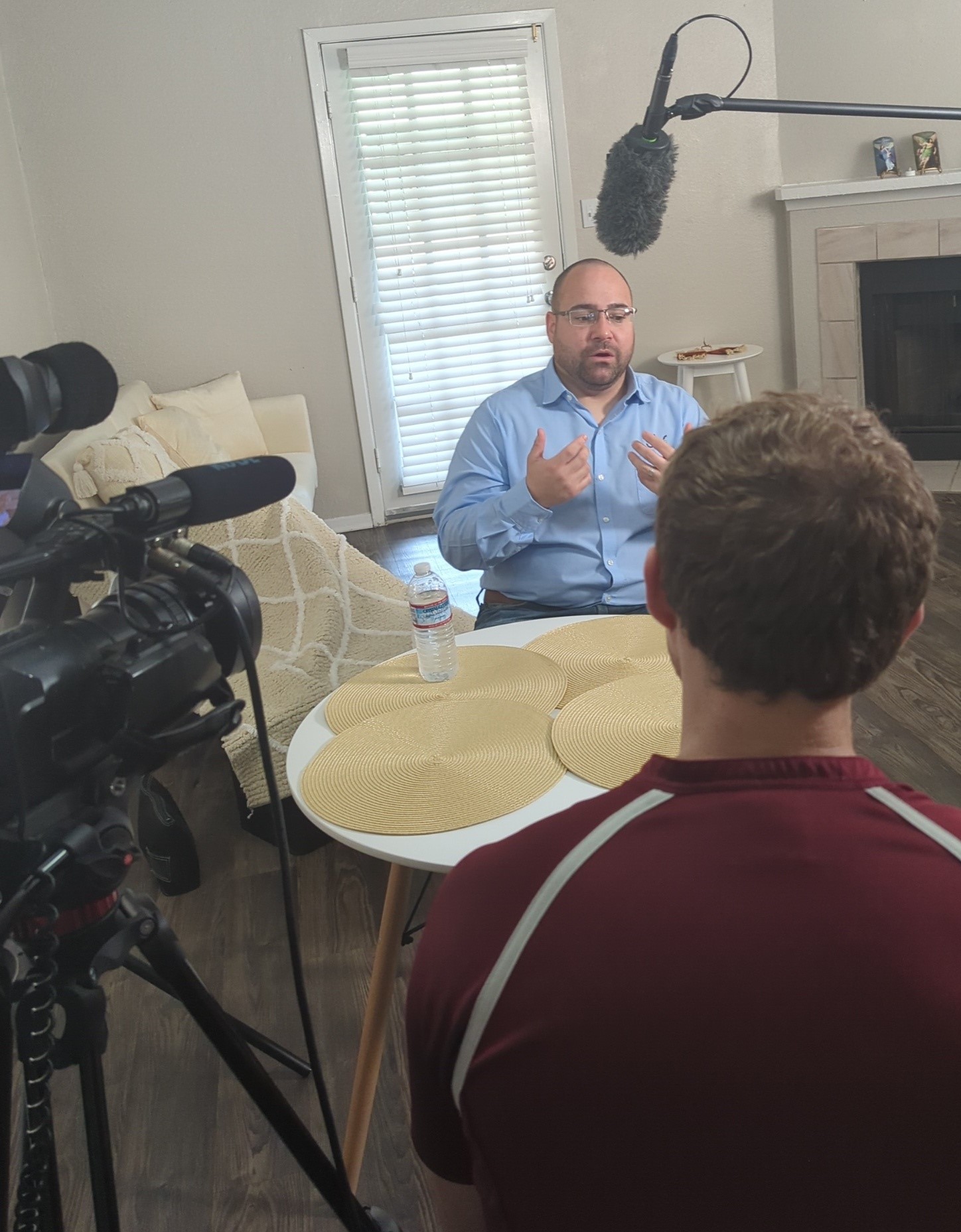
The above photos: after Title 42 ended Texas Impact staff and camera crew met and heard from various people in the Rio Grande Valley who work with asylum seekers in different capacities.

